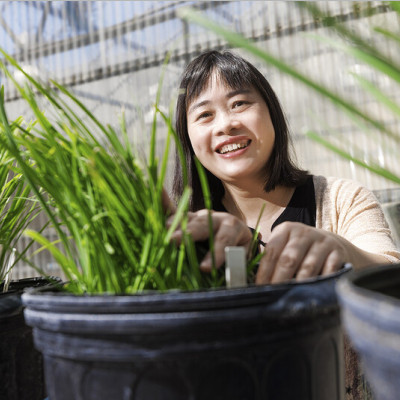
2022-09-22
Visited : 424
University of Nebraska–Lincoln scientists are studying how nanoparticles found in garlic chives curb inflammation that contributes to many obesity-related diseases.
Chronic low-grade inflammation in tissues is a factor in many diseases, including heart disease, strokes, Alzheimer’s, atherosclerosis and Type 2 diabetes, some of which are among the leading causes of death in the United States.
The Nebraska research headed by Jiujiu Yu targets the NLRP3 inflammasome, a critical component of the innate immune system that helps defend against bacterial, fungal and viral infections. However, NLRP3 also can cause inflammatory disorders when dysregulated.
“Targeting NLRP3 inflammasome-mediated inflammation should curb or prevent the disease progression and thus holds therapeutic promise to combat obesity-related diseases,” said Jiujiu Yu, assistant professor of nutrition and health sciences. Yu heads research funded by a $1,734,810 grant from the National Institutes of Health.
No medications are available to target NLRP3, but research has found that nanoparticles in certain species of Allium can slow or prevent inflammation, Yu said. Not all Allium are created equal in this regard. Yu’s team initially studied nanoparticles from six Allium species: garlic bulbs, purple and white onion, leek, scallion and garlic chives. Most showed only marginal or mild inhibitory effects — except for chives.
“Chive nanoparticles have very strong anti-inflammatory function,” said Yu, who is affiliated with the Nebraska Center for the Prevention of Obesity Diseases through Dietary Molecules. “One of the aims in our research is to identify the bioactive molecules in those chive nanoparticles.”
These membrane-enclosed nanoparticles contain lipids, proteins and RNAs. Yu said researchers have zeroed in on a specific molecule in the nanoparticles — 1,2-dilinoleoyl-sn-glcyero-3-phosphocholine — that they are further testing. Already, they’ve found that oral administration of nanoparticles containing this molecule reduced inflammasome activity and improved metabolic health in mice.
Downing a bunch of chives from the grocery store won’t necessarily have this effect, Yu said, as the anti-inflammatory effects of chives vary. Generally, for example, chives harvested in winter and spring seem to have greater impact than those obtained in summer and fall.
Ultimately, Yu said, “The goal of our research is to develop a new dietary strategy or therapeutic modality to suppress NLRP3 inflammasome activity and inflammation in obesity and obesity-related diseases.”
Chives are among several foods with nanoparticles shown to inhibit the NLRP3 inflammasome and that could be part of future anti-inflammatory treatment approaches, including ginger, shiitake mushrooms and honey.
Read the original article on University of Nebraska–Lincoln.